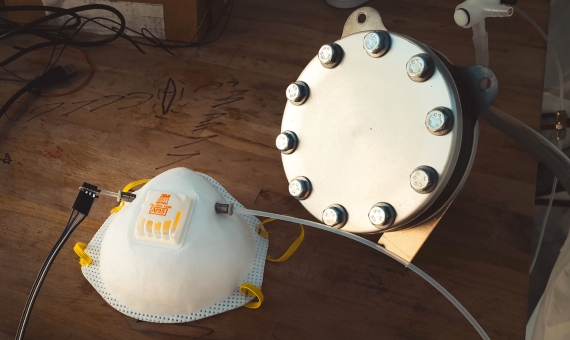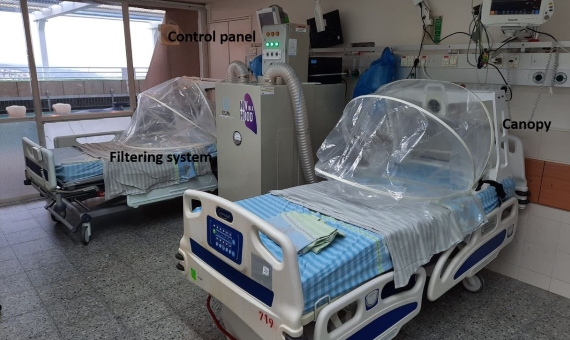The biosecurity manufacturing industry has been hamstrung by the rapid spread of the SARS-CoV-2 virus, which has caused an explosion of demand for surgical masks, gowns, gloves, protective screens, and other personal protection equipment (PPE). These supplies are essential to prevent the spread of the disease, most especially among health care workers and patients, but also as a means to protect the rest of the population, as the World Health Organization’s recommendation for the widespread use of masks suggests.
In addition to the logistical challenges associated with distribution and the fundamental issue around making these products available to everyone, governments have hit a major hurdle in implementing new biosecurity protocols: the supply of material cannot satisfy simultaneous, global demand. Luckily, in parallel to accelerating the search for a SARS-CoV-2 vaccine, the scientific community is making strides in other areas, such as exploring new technologies that are contributing to the development of new biosecurity materials and supplies, which in turn can relieve the burden of demand and could even improve on current protection standards.
A research team led by Il-Doo Kim has developed a face mask with a filter made from nanofibers. It maintains its efficacy even after being washed. Source: KAIST
Nanofabrics and Nanofibers in the Production of Reusable Masks
In order for a mask to successfully provide protection against the virus (meaning it can effectively filter out the contagious microparticles that threaten to infect the wearer) they must comply to European legislation that classifies them per their efficiency levels. The acronym FFP (Filtering Face Piece) is a reference to the European standard for filtering capacity. With a maximum internal leak rate of 2 percent, FFP3 is the only European classification that meets WHO recommendations for moderate risk activities. This means that only 2 out of every 100 microparticles that pose a risk of contagion can escape the filter. For FFP2 masks, the percentage is 8 and for FFP1, 22.
Once the decision about an acceptable level of filtration has been made at an international level, an approach to supplying the world with fabrics and materials that deliver on the filtering recommendations must be determined. Different research programs around the world are underway in order to meet this goal. The Spanish startup, Bioinicia, has begun a project to develop rolls of nanofabrics that can be used to make the filters for FFP2 and FFP3 masks. José María Lagaron, CEO and Head of Research for the New Materials and Nanotechnology Department at the Institute for Agrochemistry and Food Technology in Spain’s Senior Council for Scientific Research (CSIC) told the news agency, Europa Press, that they could produce between seven and nine million masks a week.
An article in the journal, Engineering, Research and Technology, explains that electrospinning is a manufacturing technique used to create micro and nanofibers from polymers. The end result is a fiber-membrane product.
Using Liquid Solutions to Filter: Chemistry against COVID-19
At Stanford University, a team that is usually dedicated to creating fuel cells for next generation vehicles is now working on a redesign of face masks, a design that is more conducive to the delivery of oxygen. A side-effect of their filtering, masks also make it harder to breathe. In fact, it is estimated that N95 masks reduce oxygen consumption by between 5 and 20 percent, according to scientists involved in the project.

John Xu, one of the scientists in charge of the experiment, explains how they are testing two different prototypes to promote oxygen enrichment when using these face masks. One of the options in the testing phase is known as ‘splitting water’ where water is collected and an electric current passed through it, causing the additional electrons to split the water into pure hydrogen and pure oxygen.
The innovative technology company, I+DB ACOUSTIC is working on a project that also uses water to both improve filtering and allow face masks and other PPE to be reused. They are proposing to use an aqueous filter through which air can pass. With their approach, the liquid would include a disinfecting solution like alcohol or hydrogen peroxide. The filtering element could be refilled so that it does not lose efficacy. Furthermore, because the disinfectant neutralizes the pathogen, no toxic waste is produced. The objective is to develop a sustainable system of personalized material for each health care worker, that can be disinfected and reused by the same team over a long period of time.
Reuse and Recycle: a Tetra-Bric Prototype
Innovation flourishes in desperate times, and in the context of the COVID-19 pandemic, some research projects seek to reuse materials that already exist. For example, the Instituto Andaluz de Domótica y Eficiencia Energética (IDEE or Andalusian Institute of Automation and Energy Efficiency) is investigating whether a material as common as Tetra-Bric packaging can be transformed into face masks.
According to the Institute, Tetra-Bric is comprised of of five overlapping layers: three of plastic, one of aluminum, and one of cardboard (cellulose). It could therefore be useful in protecting us from the spread of the SARS-CoV-2 virus. The approach consists of modifying the spout where the liquid pours out and fitting it with a temporary, disposable filter. The prototype, to be approved and launched into production, would represent “an economic solution that can be manufactured locally and provides absolute protection.”
Virus-killing Smart Nanoparticles
Thus far, all the materials we have at our disposal in the fight against the virus stop it from spreading by preventing it from passing through surfaces. Researchers at the University of Central Florida (UCF) are working to develop a nanoparticle film that would do much more than filter: it could catch the virus and kill it in a matter of seconds. Sudipta Seal, an engineer specializing in material science and nanotechnology, began this project working with Griffith Parks, a virologist who leads research at UCF’s medical school. Seal’s idea, funded by the National Science Foundation, will create nanostructures that can catch the virus and then unleash a chemical reaction with ultraviolet light to destroy it. The scientists have said that if successful, the film covering could be added to medical masks, gloves, and gowns.
New Protective Elements: Reinventing Masks
The European Respiratory Journal has published an article in which several scientists from different institutions in Israel propose designing a plastic covering, similar to a canopy, as a substitute for masks for hospitalized patients.

The researchers argue that the plastic used for the covering would prevent fluid or particles from passing through and it has been proven to meet international standards, basing their efficacy on the number and size of the air particles that pass through the material. In addition, it would prevent patients from touching their faces, because their hands are outside the canopy. It would also be more comfortable to breathe without having to use a mask for so many hours at a time.
Comments on this publication